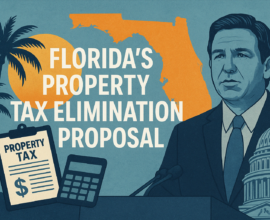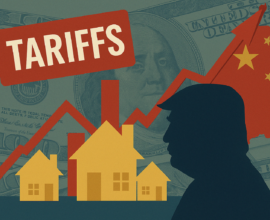Is Flipping Land a Great Real Estate Strategy?
Most real estate investors are already familiar with the idea of house flipping. In simple terms, you buy a house, make a few repairs and upgrades, and sell the house for a profit. Some investors take the extra step of upgrading a home and just renting it out before potentially selling the property down the road.
Another lesser-known investing technique involves a similar process but with land. While land flipping may not be for everyone, it offers an amazing opportunity for those looking to get started in real estate investing or to diversify their portfolios.
What Is Land Flipping?
Land flipping is just like it sounds. You purchase raw land and then turn around and sell it for a profit. This model is similar to the model used by house flippers, minus the house.
Unlike house flipping, there aren’t tons of others competing for properties. To date, there aren’t any HGTV shows following land flippers around. Some might suggest that this is because land flipping isn’t as exciting or profitable as house flipping, but those people most likely don’t know the whole story.
Land flipping can be one of the easiest and most profitable ways to get into real estate investing. Raw land is much less expensive than buying a house, apartment unit, or commercial property. That means you don’t need as much capital, and there’s less risk.
Land flipping, when done correctly, also has excellent profit margins. There are far fewer secondary costs like making repairs, paying for inspections, and so on.
The Life Cycle of Land Flipping
Not every investor will use the same method for flipping land, but there is a fairly standard life cycle that every deal goes through. Here’s how you can jump into the land flipping game.
1. Do Your Homework
If you’re just getting started with flipping land, you want to take some time to explore multiple markets. Not every area will have the same types of land available in the same price range.
Your goal is to identify what kind of land you’re looking to flip. That also means identifying any state or local laws that might apply to vacant land transactions, zoning, etc. You also need to set your budget for the deal.
2. Pick Your Target
There are several types of land that you could purchase. The first involves land that surrounds or is near paths of growth. Most cities have predictable or easy-to-identify pathways of growth. As population increases in urban areas, people will look towards the suburbs to escape congestion. If you can reliably predict where demand for land is coming, you can potentially get in early enough to purchase future desired land at a great price.
Identifying growth paths is a skill that involves understanding population dynamics, market trends, and more. If you guess wrong, you could end up with land that isn’t in actual demand.
Another option to target for your land investment is something called an infill lot. Infill lots are basically gaps in areas that are already developed. Imagine driving down the road and seeing homes or commercial buildings on every lot of the block except one or seeing a massive piece of raw land between two existing properties. This land is an infill lot.
Infill lots can also be more significant pieces of land around areas of new construction. Companies and developers will buy massive amounts of land to build planned communities with multiple houses. Infill lots could be areas near these new communities where someone might want to add commercial properties to serve the new homes. They could even be used for residential areas that will attract people who want to live near but not in the fresh neighborhoods.
You want to research what kind of land is available and how it can be developed. Where the land is located and what surrounds it might dictate how it can be used. These elements will directly impact the market value of the property.
A final option is recreational land. This is most often rural land that hasn’t been zoned for development yet. Because it doesn’t have a specific designation, a buyer has an opportunity to use the land for recreational purposes like hunting, fishing, hiking, camping, and more. Properties that can be used for recreation and are close to a growing city are especially great options to flip.
3. Contact the Owner
Once you find a property that has potential, it’s time for the hard part: getting it under contract. The first step is to contact the owner. Most state or county websites can determine who owns a property by simply entering the address, parcel number, or other information. When you know who owns the property, you can look for their contact information. If the land is listing on PropertyOnion.com then you can use our skip trace service to find their phone, email and mailing addresses.
In some cases, the land is already listed for sale, and the owner is eagerly waiting to make a deal. In other situations, you may have to make a pitch. You want to be upfront with your intentions. Some landowners may be hesitant to work with an investor, and no landowners like to be misled.
Land flippers use a number of techniques to start a conversation with landowners. Some target multiple properties via a mass mail campaign, others try to get the owners on the phone, while some will just go knock on the door.
4. Get the Property Under Contract
Spend some time crunching the numbers to make sure you can not only stay under budget on your deal but turn a worthwhile profit. The goal is to purchase the land for less than the actual market value.
Determining the market value for land is more difficult than it is for a house. To figure out how much a house is worth, you can usually just look at similar houses in the same area to create an estimated value. While using a sales comparison approach for land is certainly possible, the available data may not be as recent or readily available.
If you’re not sure how to estimate the value of raw land without comps in the area, you could use a system called Price Boss. This app allows you to take data from websites like Zillow, Craigslist, and LandWatch and come up with data to help drive your decision. While estimating a land’s market value is more of an art than a science, having some data to back up your decision brings peace of mind.
Once you get the owner to agree on a price, it’s time to create a contract. In most cases, you won’t actually purchase the land. The seller will sign an assignment contract that makes you a wholesaler, someone who has the right to sell to another buyer. You still may have to make payments on the land if it doesn’t flip right away, so make sure you know what costs are associated with controlling the property for a few months, a year, and more.
If you decide to fully purchase the land, perhaps to make some improvements or build a house, you’ll need to close on the property. While you can complete the land purchase yourself, it’s a rather complex process. Unless you’ve been down this road before, it’s best to use a title company or real estate lawyer.
5. Find a Buyer
Now that you have the property in your possession or under your control, it’s time to turn it around and sell it for a profit. How quickly the property is sold depends on the quality of your listing and marketing efforts. Of course, you have to also consider the type of property, location, starting price, etc.
To get started, create a quality property listing. Get great photos of the property, highlighting special elements that may be of interest. Write a compelling listing that describes the property, potential uses, and so on. You can even create a video to showcase the property.
Post the property for sale in as many places as possible. This includes websites like Zillow, Realtor, and Trulia. You can also work with a real estate agent to help increase your reach, but keep in mind an agent is going to get a commission from the sale. Make sure to tell the neighbors and post in Facebook groups. The more people that know there is land for sale, the better.
When you get an interested buyer and an agreed-upon price, it’s time to close the deal. Depending on the complexity of the deal, you may need to enlist the help of a title agency or real estate attorney, especially if you are acting as a wholesaler (where you are actually flipping the contract instead of flipping the actual property).
Land Flipping Has Potential in Your Real Estate Strategy
Most real estate investors are so caught up in looking for houses and buildings to flip or manage that they overlook the massive opportunity in flipping land. Of course, not everyone has the time or interest to jump into a new venture.
If you are looking for a way to get into real estate investing or are hoping to expand your strategy into new areas, land flipping is a great option. It’s often overlooked, which means there are few people in the game. If you can get a good grasp on finding, buying, and flipping land, you’ll be one step closer to your financial goals.
Be patient and ease into the process. While the overall concept of flipping land isn’t too different from flipping a house, it’s not exactly the same. Your real estate attorney can help with the legal aspects, and you can always look for a real estate agent that specializes in land for sale.
If you’d like to learn more about the ins and outs of land flipping, there are several reputable online courses and masterclasses, like the Land Profit Generator or ReTipster, that can offer additional insight. If you’re ready to jump right into the search for the perfect property, check out PropertyOnion.com’s property search tool.
There’s plenty of land out there, and there’s never been a better time to start exploring if land flipping is for you than right now.








